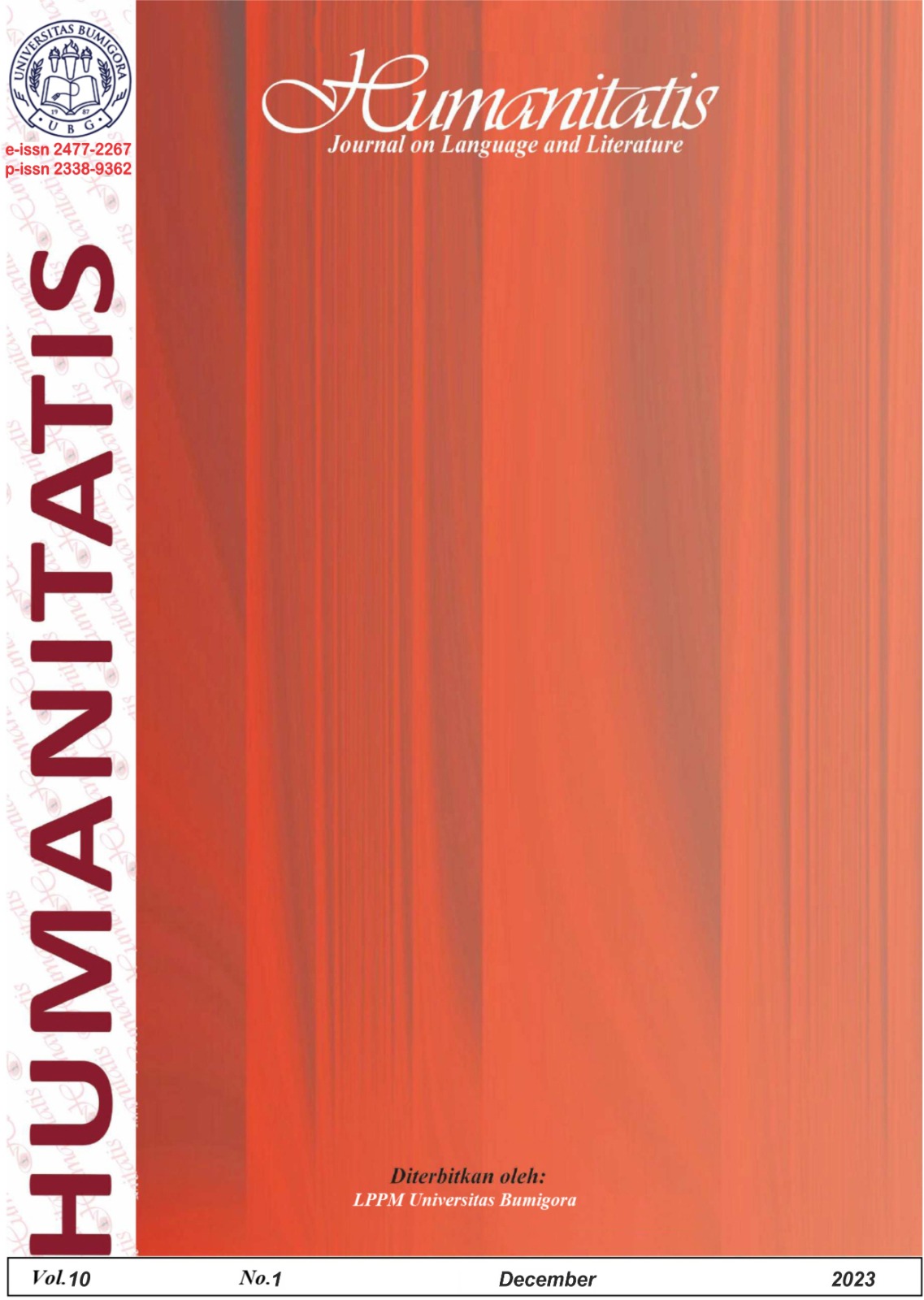Study of Sasaknese Proverb and Its Significances in Social life: Semiotics Rolland Barth Analysis
Abstract
Sasak ethnic is people who occupied Lombok Island. Sasak ethnic has uniqueness in expressing their thought and feeling so called sêsênggak. Sêsênggak is the expression sasakness feeling and thought which have intrinsic and extrinsic meaning. The expression used local language as result many Sasaknese especially youth not fully comprehend the real meaning of proverb. Therefore, the current research conducted research based on Rolland Barthe theory in order give insight and knowledge to youth dealing with message behind the proverb. The objective of the research is to reveal the meaning of denotation, connotation and in its significances to the Sasak ethnic of Lombok Island, West Nusa Tenggara. This research employed qualitative descriptive in which the data taken from book, document and internet. Based on the results of the data analysis, several things can be concluded. First, the connotative meanings in sêsênggak are descriptions of the basic representations of mental capacities that Sasak people used in the past to conceptualise themselves and their world. Second, based on the meanings found, sêsênggak has the function of expressing thoughts that contain general truths that serve to control and judge individual or group attitudes/behaviours. Third, the myth shows that sêsênggak carries messages of morality, education, law, wisdom, economic and social values, and the like. Therefore, sêsênggak cannot be separated from the normative and evaluative description of an attitude or behaviour of the speaking community in a limited context and the general public in a wider context.
References
Asmendri, A., Sari, M., Khairiah, K., Ibarra, F. P., Santos, M. R. H. M. D., & Quicho, R. F. (2023). The Roles of Principals in Teacher Competency Development for Students’ Morale Improvement. Journal of Higher Education Theory and Practice, 23(11), 125–137.
Audunson, R. (1999). Between professional field norms and environmental change impetuses: A comparative study of change processes in public libraries. Library & Information Science Research, 21(4), 523–552.
Christians, C. G. (2005). In qualitative research. Sage Handb. Qualitat. Res, 139, 139–164.
Danesi, M. (2004). Messages, signs, and meanings: A basic textbook in semiotics and communication (Vol. 1). Canadian Scholars’ Press.
Diniarti, D. A. (2017). Kajian Semiotik Kultural Peribahasa (Sesenggaq) Sasak. Lingua: Jurnal Bahasa, Sastra, Dan Pengajarannya, 14(1), 13–26.
Hasna, A., Rahma, A., Nurdiyatnika, R., & Nurhadi, Z. F. (2023). Analisis Semiotika Pesan Moral Dalam Drama Korea" Move To Heaven". Humantech: Jurnal Ilmiah Multidisiplin Indonesia, 2(10), 2142–2151.
Honeck, R. P. (2013). A proverb in mind: The cognitive science of proverbial wit and wisdom. Psychology Press.
Isnaini, M., Nuriadi, Baharuddin, & Apgrianto, K. (2021). Sesenggak Dan Refleksi Pandangan Dunia Masyarakat Sasak Terhadap Diri Dan Lingkungannya. Jurnal Lisdaya, 17(2), 1–6. https://doi.org/10.29303/lisdaya.v17i2.38
Kevinia, C., syahara, putri sayahara putri, Aulia, S., & Astari, T. (2022). Analisis Teori Semiotika Roland Barthes Dalam Film Miracle in Cell No.7 Versi Indonesia. Journal of Communication Studies and Society , 1(2), 38–43. https://doi.org/10.38043/commusty.v1i2.4082
Kovecses, Z. (2006). Language, mind, and culture: A practical introduction. Oxford University Press.
Mejía, A., & Montoya, S. E. (2017). On the meeting of the moral and the aesthetic in literary education. Journal of Philosophy of Education, 51(2), 370–386.
Mudjiyanto, B., & Nur, E. (2013). Semiotics In Research Method of Communication [Semiotika Dalam Metode Penelitian Komunikasi]. Jurnal Pekommas, 16(1), 73–82.
Natanson, M. (2012). Literature, philosophy, and the social sciences: Essays in existentialism and phenomenology. Springer.
Nursaly, B. R., & Ernawati, T. (2021). Binatang dalam Sesenggak Sasak: Kajian Etnolinguistik. SeBaSa, 4(1), 21–31.
Sastra, M. O. D., & Marijo. (2019). Aktualisasi Sesenggak Sasak Dalam Teater Tradisional Kemidi Rudat Lombok. Jurnal Elementary, 2(1), 11–17. Retrieved from http://journal.ummat.ac.id/index.php/elementary/article/view/1290%0Ahttp://journal.ummat.ac.id/index.php/elementary/article/download/1290/pdf
Shubhi, M. (2019). Hakikat Karya Masyarakat Sasak yang Tercermin dalam Sesenggak. Mabasan, 5(2), 48–58. https://doi.org/10.26499/mab.v5i2.210
Slettebø, Å., Sæteren, B., Caspari, S., Lohne, V., Rehnsfeldt, A. W., Heggestad, A. K. T., … Lindwall, L. (2017). The significance of meaningful and enjoyable activities for nursing home resident’s experiences of dignity. Scandinavian Journal of Caring Sciences, 31(4), 718–726.
Suardana, I. W., Gelgel, I. P., & Watra, I. W. (2022). Traditional Villages Empowerment in Local Wisdom Preservation towards Cultural Tourism Development. International Journal of Social Sciences, 5(1), 74–81.
Syamsurrijal, S., Hadi, M. Z. P., & Miswaty, T. C. (2023). a Study of Meaning in Al Mahsar’S Song Lyrics “Pangeran Inaq”: Semiotic Riffaterre Analysis. Jurnal Ilmiah Mandala Education, 9(1), 253–263. https://doi.org/10.58258/jime.v9i1.4623
Vygotsky, L. e v S. (2004). Imagination and Creativity in Childhood. Journal of Russian & East European Psychology, 42(1), 7–97. https://doi.org/10.1080/10610405.2004.11059210

This work is licensed under a Creative Commons Attribution 4.0 International License.













